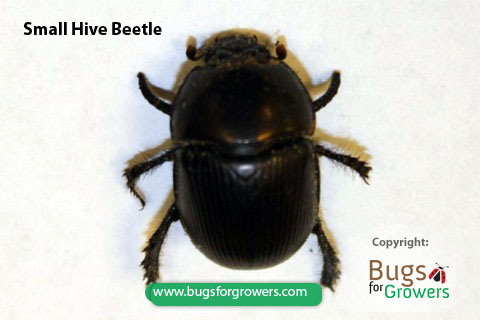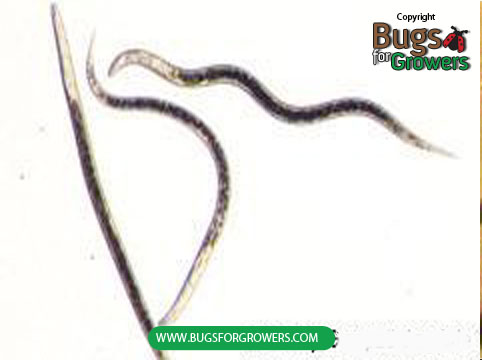Overwintering stages of small hive beetles
Watch following video about identification of small hive beetles:
Only adults of the small hive beetles, Aethina tumida (Photo 1) can survive as the overwintering stage in harsh cold temperatures during winter by hiding within the cluster of bees inside the beehives. When temperature starts dropping off in the fall season that starts from the end of September and it ends at the end of November, most of the small hive beetle adults that emerge from the pupae generally move from the soil into the beehives to protect themselves from extreme cold temperatures from December through February.
Therefore, starting from end of September through November is the best time to kill both mature larvae and pupae of small hive beetles so that there will be no emergence of new batches of adults and their survival during harsh winter temperatures in the beehives. This will stop future generations of small hive beetles in the next spring.

How to stop emergence of small hive beetles from pupae?
To stop emergence of small hive beetle adults from pupae and their entry into beehives for overwintering, kill both mature larvae and pupae using either insecticides or beneficial entomopathogenic Heterorhabditis indica nematodes (Photo 2).
Since insecticides have detrimental effects on the humans and the environment, beneficial entomopathogenic Heterorhabditis indica nematodes should be used for killing both the mature larvae and pupae of small hive beetles.
If mature larvae that have already been moved into the soil for pupation are killed by applying beneficial nematodes then they cannot form pupae. So there will be no emergence of new adults. Similarly, if existing pupae of small hive beetles are targeted and directly killed by applying beneficial nematodes then there will be no emergence of new adult beetles.
Thus killing of both mature larvae and pupae with beneficial nematodes will stop the emergence of future generations of adults that will lead to discontinuation of the life cycle of small hive beetles. Thus, honeybee colonies will be protected from their damage.

How to kill mature larvae and pupae of small hive beetles with beneficial Heteorhabditis indica nematodes?
Currently beneficial entomopathogenic Heterorhabditis indica nematodes (Photo 2) have been commercially produced, and used for controlling mature larval and pupal stages of small hive beetles that are found in the soil within 3 feet radius of beehives.
For effective control of these stages, nematodes applied to the soil surface within 3 feet radius around beehives. Since nematodes are applied only to the soil surface, they cannot kill young larval and adult stages of small hive beetles because they live inside the beehives where nematodes are not applied.
Also, Heterorhabditis indica nematodes cannot infect and kill SHB adults even though they are exposed to nematodes while living in soil for a short period of time after emerging from pupae and before moving into beehives for reproduction or overwintering.
How do beneficial Heterorhabditis indica nematodes kill mature larvae and pupae of small hive beetles?
When the Heterorhabditis indica nematodes are applied to the soil surface, they enter into the soil and search for larval and/or pupal stages of small hive beetles. Once they locate either larva or pupa, they enter into their body cavities via natural openings like mouth, anus and spiracles.
Once in the body cavity, nematodes will release symbiotic bacteria called photorhabdus spp. from their gut in the blood of larvae or pupae. In the blood, these bacteria multiply quickly and cause septicemia that kills both larvae and pupae usually within 48 hours after infection.
How to apply beneficial Heterorhabditis indica nematodes?
Beneficial entomopathogenic Heterorhabditis indica nematodes are commercially sold either in gel or granular formulations and easy to apply. For application of nematodes, dissolve the formulations in water and apply as drench to the soil surface around 3 feet radius of beehives using a small water can with a sprinkler head (Photo 3). As nematodes need a film of water for their movement to seek their hosts in the soil, irrigate the targeted area before application of nematodes and immediately after their application so that nematodes will move freely in the soil profile to seek host insects including small hive beetle larvae and pupae.

How many Heterorhabditis indica nematodes should be applied?
The optimum rate for the effective control of small hive beetles would be about 23,000 infective juveniles of Heterorhabditis indica nematodes per square foot area.
